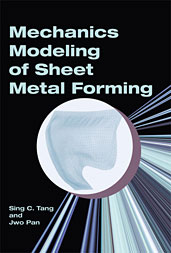Technical Paper
Weld Line Factors for Thermoplastics
2017-03-28
2017-01-0481
Weld lines occur when melt flow fronts meet during the injection molding of plastic parts. It is important to investigate the weld line because the weld line area can induce potential failure of structural application. In this paper, a weld line factor (W-L factor) was adopted to describe the strength reduction to the ultimate strength due to the appearance of weld line. There were two engineering thermoplastics involved in this study, including one neat PP and one of talc filled PP plastics. The experimental design was used to investigate four main injection molding parameters (melt temperature, mold temperature, injection speed and packing pressure). Both the tensile bar samples with/without weld lines were molded at each process settings. The sample strength was obtained by the tensile tests under two levels of testing speed (5mm/min and 200mm/min) and testing temperatures (room temperature and -30°C). The results showed that different materials had various values of W-L factor.

